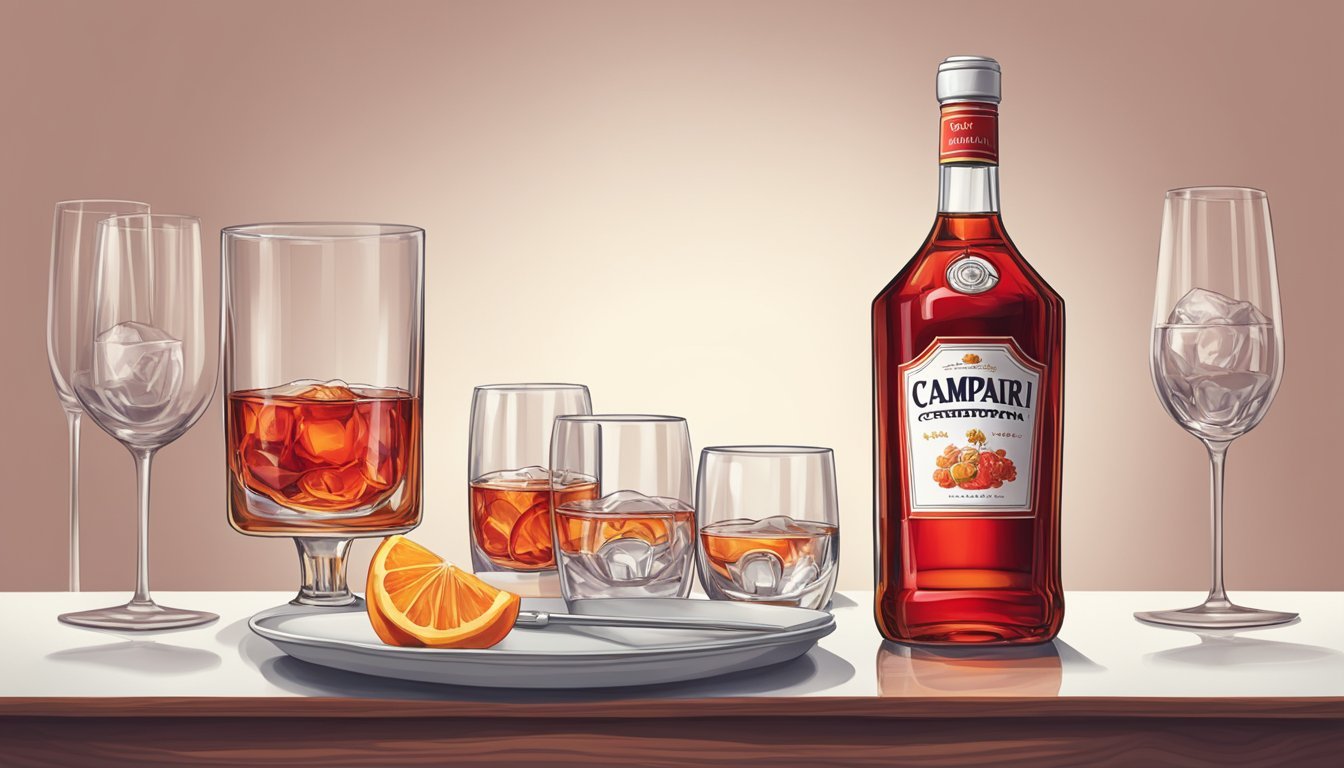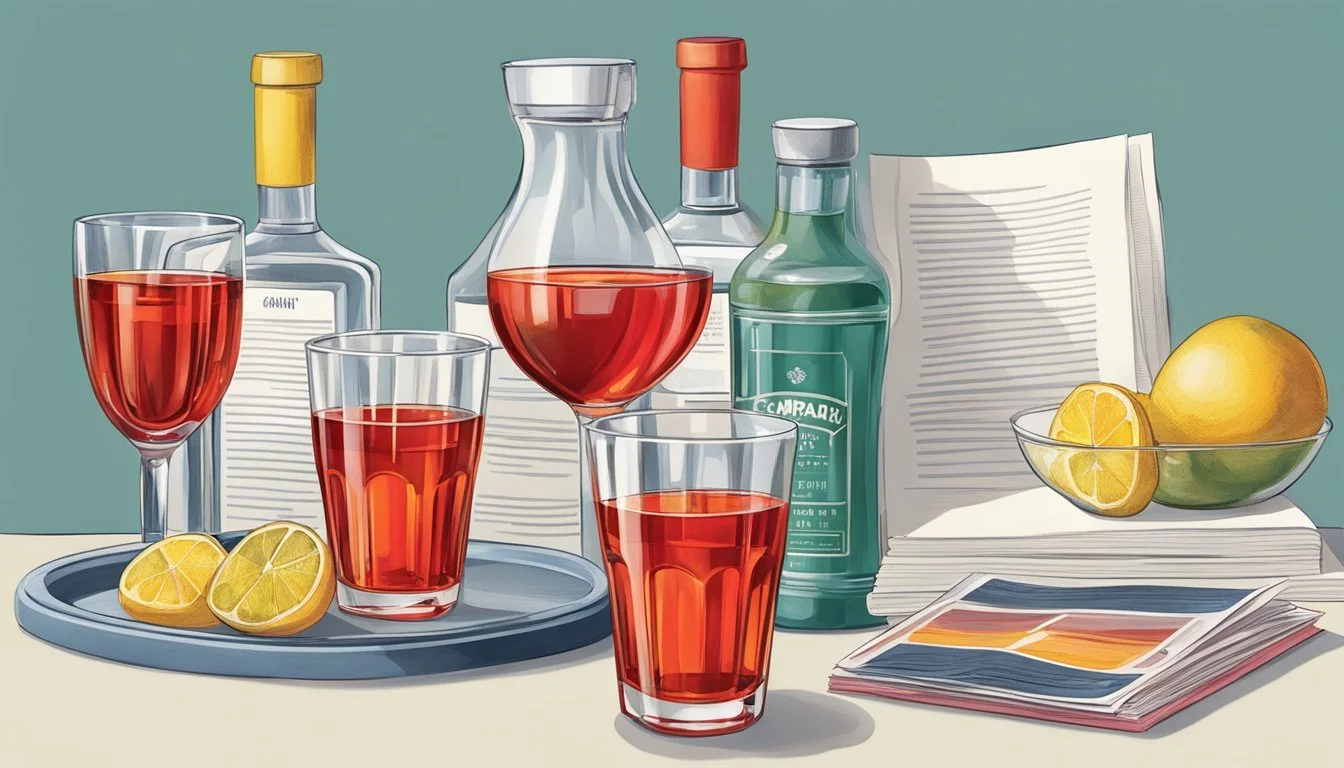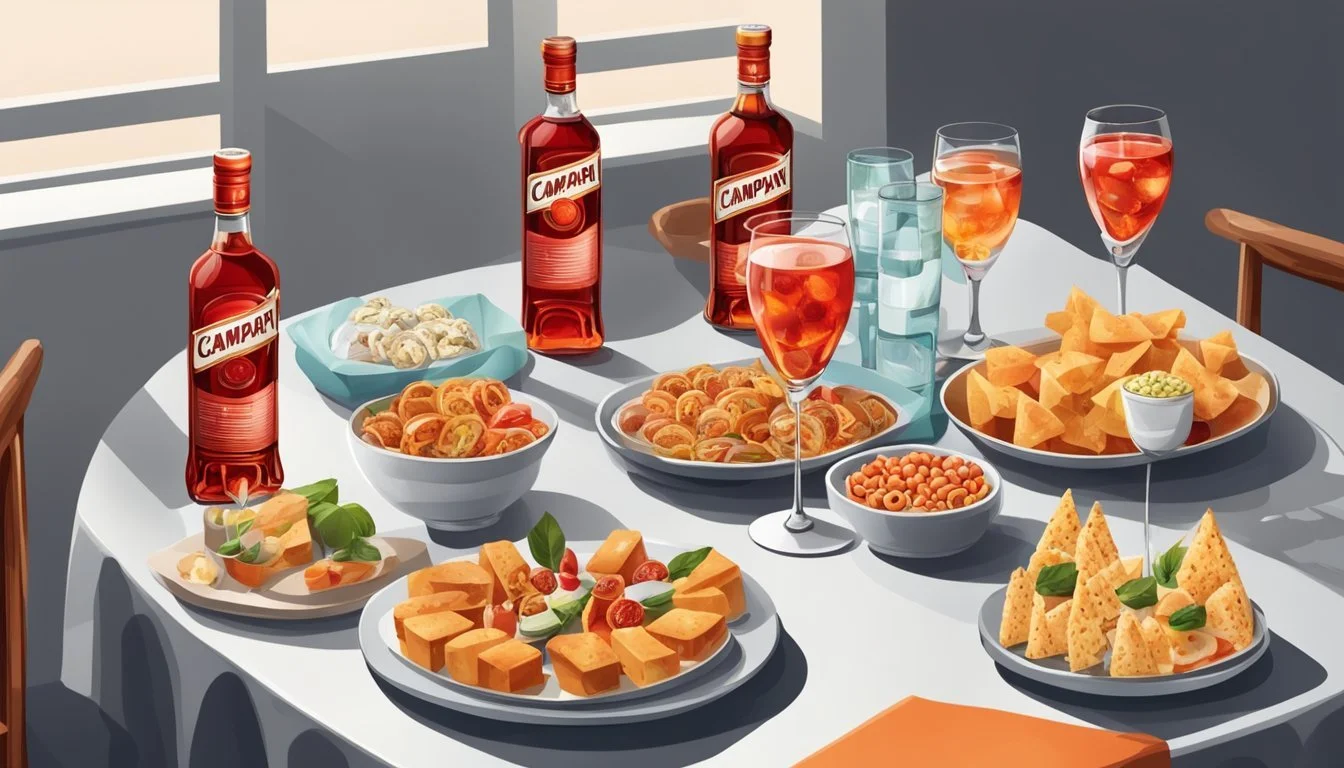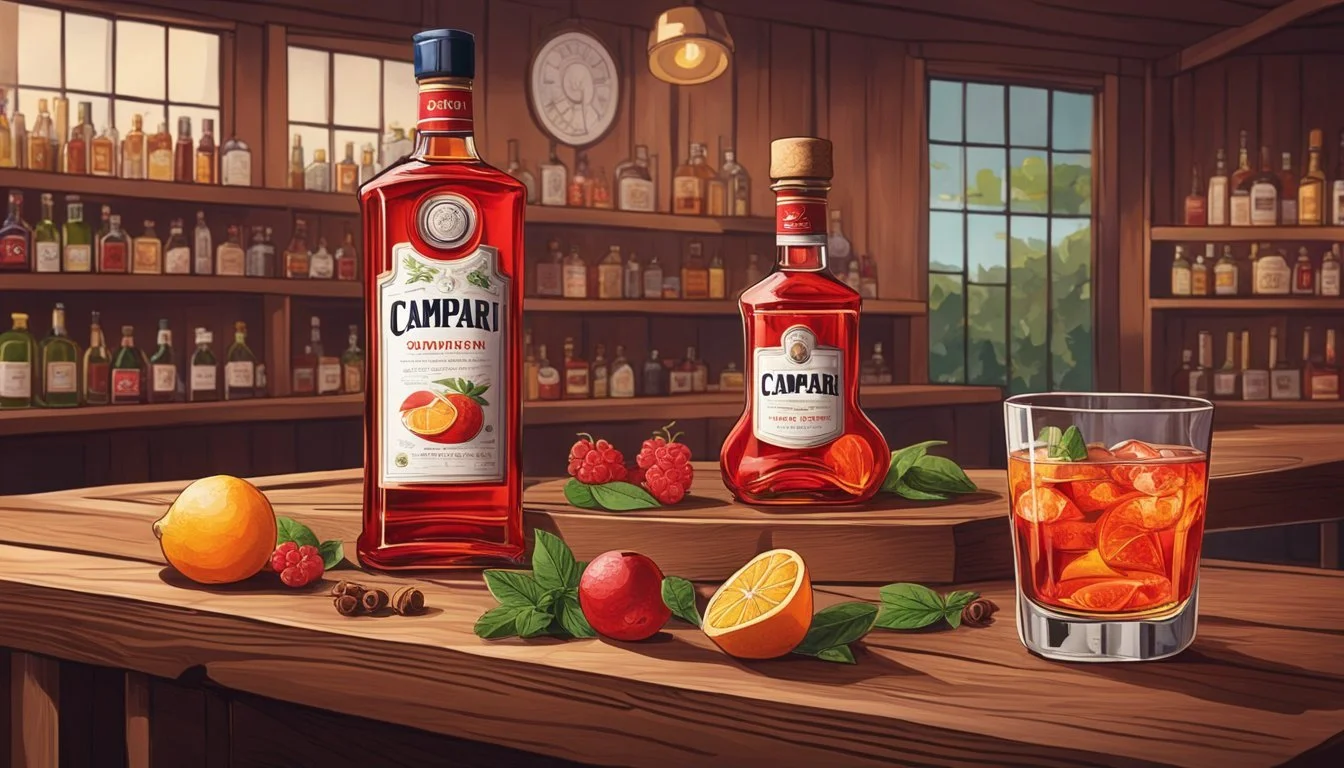How Many Servings of Campari Is Too Much
Understanding Safe Consumption
Campari, the signature Italian aperitif, is a popular choice for cocktails like the Negroni and the Americano. With its vibrant red hue and distinct bitter flavor, it has become a staple in many bars and households. A standard serving of Campari contains around 105 calories and about 2 grams of sugar in a 1.5-ounce shot. Understanding these dietary components is key to enjoying this liqueur responsibly.
While the unique taste of Campari is celebrated, moderation is crucial when consuming alcoholic beverages. Excessive intake can lead to negative health effects, and it's important to recognize personal limits. Typically, it's recommended to stick to one or two servings per occasion to maintain a balance. Overindulgence not only affects health but can also diminish the enjoyment of this timeless drink.
For most people, consuming Campari in moderation enhances the experience without going overboard. This allows them to savor its distinctive taste while maintaining a healthy lifestyle. Enjoying Campari thoughtfully ensures that this classic aperitif remains a pleasant and sophisticated addition to any gathering or personal moment.
Understanding Alcohol Consumption
When considering how much alcohol is too much, it is essential to understand safe alcohol limits and the role of Alcohol by Volume (ABV) in servings. This will help ensure responsible consumption and minimize health risks.
Determining Safe Alcohol Limits
Safe alcohol limits are determined by several health guidelines. For adults who choose to drink, women should have 1 drink or less per day, while men should have 2 drinks or less per day. These limits are daily, not averages.
Heavy drinking is defined by the CDC as 8 or more drinks per week for females and 15 or more drinks per week for males. Binge drinking occurs when a person's blood alcohol concentration (BAC) reaches 0.08% or higher, typically after 4 or more drinks for women or 5 or more drinks for men within about 2 hours.
The Role of ABV in Servings
Alcohol by Volume (ABV) plays a crucial role in determining a standard drink. A standard drink typically contains about 14 grams of pure alcohol. This translates to:
12 ounces of beer (5% ABV)
5 ounces of wine (12% ABV)
1.5 ounces of distilled spirits (40% ABV)
Campari, with an ABV higher than many wines and beers but lower than most spirits, should be consumed mindfully. The ABV can influence how quickly one might reach intoxication. Not all brands of Campari have the same ABV, so it's important to check labels and understand that serving sizes might need adjustment based on ABV.
Campari: A Brief Overview
Campari, an iconic Italian liqueur, is cherished for its bitter yet fruity flavor and rich red color. It has a rich history dating back to 1860, a unique blend of flavors, and stands apart from other aperitifs in the market.
History and Origin
Gaspare Campari, a master mixologist, created Campari in 1860 in Novara, Italy. His innovative blend aimed to strike a balance between sweetness and bitterness, resulting in a groundbreaking aperitif.
The recipe has remained largely unchanged since its inception. The brand quickly grew in popularity, spreading beyond Italy to become a staple in bars worldwide.
Campari's Unique Flavor Profile
Campari's flavor is a complex mixture of bitter and sweet, dominated by notes of orange, grapefruit, and various herbs and spices. Its bright red hue adds to its visual appeal.
The bitterness of Campari is strong and considered an acquired taste. Many appreciate its ability to enhance cocktails, giving them a unique, aromatic quality.
Comparing Campari with Other Aperitifs
While Campari is characterized by its bitterness and citrus notes, other aperitifs like Aperol, Cynar, and vermouth exhibit distinct tastes. Aperol is sweeter and less bitter, making it more approachable.
Cynar incorporates artichoke and other herbal flavors, providing a different bitter profile. Vermouth, in contrast, is usually wine-based, with varying degrees of sweetness and herbal infusions.
The Art of Cocktails with Campari
Campari is a versatile and iconic liqueur, known for its deep red color and complex flavor. It shines in various classic cocktails, benefits from specific mixing techniques, and pairs well with certain foods.
Classic Campari Cocktails
Campari's most famous cocktail is the Negroni, combining equal parts Campari, gin, and sweet vermouth. Another essential drink is the Americano, made with Campari, sweet vermouth, and soda water.
The Boulevardier offers a whiskey twist, featuring bourbon instead of gin. Campari spritz, mixed with Prosecco and soda, is ideal for summer. These classic drinks highlight Campari's versatility and its ability to blend well with different spirits and mixers.
Mixing Techniques and Best Practices
Creating cocktails with Campari involves understanding its bitterness and how to balance it. Stirring, not shaking, maintains clarity in drinks like the Negroni. Proper dilution through stirring with ice is critical, making the flavors more harmonious.
Use fresh ingredients, like orange peels for garnish, to enhance the drink's aroma. Accurate measurements are crucial, often requiring equal parts, as in many classic recipes. Mastering these techniques brings out the best in Campari cocktails.
Campari and Cocktail Pairings
Pairing Campari cocktails with food enhances the dining experience. The bitterness of Campari complements rich dishes, like beef or lamb. The Negroni pairs beautifully with aged cheeses and charcuterie, balancing the fats and enhancing flavors.
For lighter fare, such as seafood or citrusy salads, the Campari spritz offers a refreshing counterpoint. Understanding these pairings helps create a cohesive and enjoyable menu, making the meal memorable.
Health Considerations and Campari
Regular consumption of Campari, like any alcoholic beverage, carries certain health considerations that should be carefully evaluated. It's important to understand both the impact of its bitter ingredients and the implications of its alcohol content.
Understanding the Impact of Bitters
Campari’s bitter ingredients, such as bitter orange and rhubarb, are known for their rich antioxidant content. Antioxidants like Vitamin A and polyphenols can support healthy vision, skin, and reduce inflammation.
Despite these benefits, excessive consumption can strain the digestive system. Bitters stimulate digestive enzyme production, which can be beneficial in moderate amounts but potentially harmful if overconsumed, leading to stomach discomfort or acid reflux.
Additionally, while bitters may encourage healthy eating habits by enhancing the flavor of foods, over-reliance on Campari for health benefits is not advisable. Moderation ensures one can enjoy the potential benefits without negative effects.
Alcohol Content in Perspective
Campari is typically 20-28% alcohol by volume, which means a 1.5-ounce serving contains roughly 0.3 to 0.42 ounces of pure alcohol. Regular consumption can contribute to the risks associated with alcohol, such as liver damage, addiction, and other health conditions.
The calories present in Campari also add up. A standard serving contains approximately 105 calories, which can lead to weight gain if consumed in large quantities.
Considering these facts, it's crucial to monitor intake and stay within recommended alcohol consumption limits to maintain overall health. Ideally, this means no more than one serving per day for women and two for men, as per many health guidelines.
Cultural Significance of Campari
Campari holds a prominent place in both its native Italy and on the global stage, signifying more than just a beverage but a cultural icon.
Campari in Italian Culture
In Italy, Campari is deeply intertwined with the tradition of the aperitivo. This cultural ritual involves enjoying a pre-dinner drink to stimulate the appetite, often paired with light snacks. The drink's vibrant red color and distinct bitterness symbolize sophistication and leisure.
Historically, Campari has been featured in various advertising campaigns and artistic works. Notable artists, such as Fortunato Depero, highlighted Campari's role in social and cultural contexts. During the early 20th century, promotional posters elevated Campari's status as an emblem of Italian style and modernity. As a result, it remains an integral part of Italian social gatherings and dining experiences.
The Global Spread of Campari
Campari's influence extends well beyond Italy. Today, it is enjoyed in over 190 countries, making it a truly global brand. Its adoption internationally can be attributed to the rise of global travel and the spread of cocktail culture. Classic cocktails like the Negroni and Americano have introduced many to Campari's unique flavor profile.
The acquisition of other popular aperitifs, such as Aperol, by the Campari Group has further boosted its visibility and market presence. From bars in New York to clubs in Tokyo, Campari is celebrated for its versatility and timeless appeal. This broad acceptance underscores the drink's universal allure and enduring legacy across diverse cultures.
Consumer Guide to Campari
Selecting the perfect bottle of Campari involves understanding its varieties, prices, and the brand's commitment to sustainability and responsibility. Here's a guide to assist consumers in making informed choices.
Choosing the Right Campari
Campari offers a distinctive bitter flavor profile, characterized by hints of orange and a proprietary blend of herbs and spices. It's essential to start with a smaller bottle, like the 375 ml, to make sure the unique taste suits your preferences.
Experienced drinkers often recommend beginning with mixed drinks, such as the classic Negroni (1:1:1 ratio of Campari, gin, and vermouth) before trying it neat. Those new to Campari may want to reduce the amount in recipes to soften its bitterness.
Price and Accessibility
Pricing for Campari varies based on bottle size. A 375 ml bottle typically costs around $20, while a 750 ml bottle is priced between $25 and $30, making it a mid-range option compared to other liquors.
Campari can be found in most liquor stores and online retailers. Regular promotions and discounts often make it more accessible to new customers. Checking multiple vendors can help find the best deals and ensure availability.
Sustainable Practices and Corporate Responsibility
Campari Group, the company behind this iconic aperitif, evidently commits to sustainability and corporate responsibility. They focus on reducing carbon emissions, managing water resources, and implementing sustainable agricultural practices.
The company also prioritizes ethical sourcing of ingredients and supports community projects globally. By choosing Campari, consumers indirectly support these initiatives, contributing to a more sustainable and responsible world.
In-Depth: Campari Ingredients and Production
Campari's iconic status stems largely from its unique recipe and meticulous production processes. This section explores the enigmatic ingredients, the distillation and aging, and the role of botanicals.
The Secret of Campari's Recipe
Campari's recipe remains a closely guarded secret. Only a handful of people know the exact formulation. The liqueur is known for its deep red color, which historically came from cochineal dye, a natural red colorant derived from insects, though it has since moved to artificial coloring.
Its flavor profile is built on a combination of herbs, aromatic plants, and fruit. Bitter orange peel, rhubarb, and ginseng are among the speculated ingredients, though the complete list is undisclosed.
Distillation and Aging Processes
Campari’s production includes an intricate distillation process. Ingredients are carefully mixed, macerated, and distilled to extract the essence of their flavors. The liquid is then blended to achieve the distinctive taste.
Aging may take place to let flavors meld together, though details on specific timelines are not public. This craftsmanship ensures each bottle maintains consistency and quality.
The Significance of Botanicals
Botanicals are crucial to Campari's bittersweet flavor. The herbs and fruits provide both aroma and taste complexity. Bitter orange is a key botanical, balancing sweetness with a sharp, tangy edge.
Other botanicals like rhubarb add depth and earthiness. These elements combined create the multifaceted flavor that is essential to classic cocktails like the Negroni and Americano.









